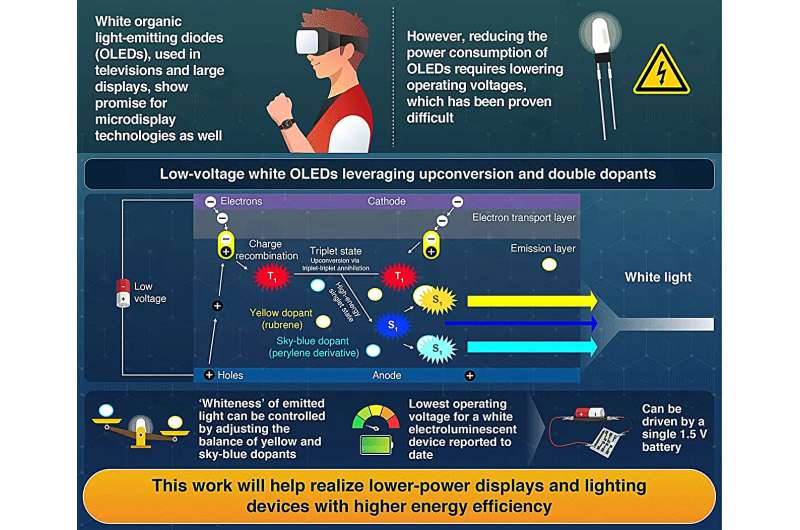Using triplet–triplet annihilation and custom dopants, this could pave the way for ultra-efficient displays and portable lighting systems.

In a major leap for display efficiency, researchers at the Institute of Science Tokyo have developed a white organic light-emitting diode (OLED) that operates at an unprecedentedly low voltage—under 1.5 volts. The study details an advancement that could dramatically reduce power consumption in next-generation displays, including TV backlights, lighting systems, and portable electronics. OLEDs have transformed the display industry with their vibrant visuals and flexibility, but white OLEDs have remained a power-hungry challenge. Traditional white OLEDs require voltages exceeding 2.5V, largely due to the high energy needed to generate blue light—a key component in white emission.
Led by Associate Professor Seiichiro Izawa, the Tokyo research team tackled this by applying triplet–triplet annihilation (TTA), an upconversion mechanism that enables blue light emission at lower voltages. In the TTA process, triplet excitons—generated by recombining electrons and holes in the organic layers—combine to form higher-energy singlet states, which emit blue light efficiently.
To create white light, the team doped the emissive layer with two complementary-color materials: a sky-blue perylene-based dopant (Tbpe) and a yellow emitter (rubrene). These dopants, excited by the blue-emitting host matrix, emit additional wavelengths that combine to form balanced white light. Fine-tuning the dopant ratios allowed precise control over the color temperature and brightness.
The result: a white OLED that switches on below 1.5 volts—low enough to be powered by a standard dry-cell battery. “To the best of our knowledge, this is the lowest operating voltage reported to date for white OLEDs,” said Izawa. This innovation opens up exciting possibilities for energy-efficient, battery-friendly displays in wearables, mobile devices, and off-grid lighting systems. As the team continues to optimize efficiency and color stability, this ultra-low-voltage approach may set the foundation for a new class of sustainable OLED applications.

